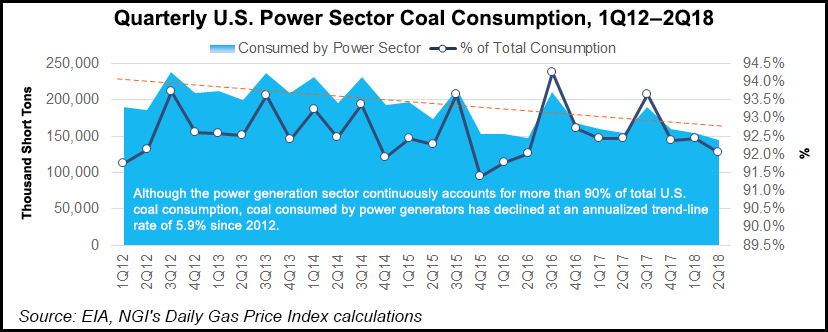NGI The Weekly Gas Market Report | Markets | NGI All News Access
Coal Demand Taking Licking from Natural Gas, Other Sources, But Still Ticking, Says IEA
Abundant natural gas supply continues to pressure the thirst for coal, but coal demand still looks to have increased in 2018 for the second year in a row and remain stable over the next five years, according to the International Energy Agency (IEA).

The global energy watchdog in its report, “Coal 2018,” said demand is being pummeled on all sides, by not only natural gas, but reduced renewables costs, air quality/climate policies and coal divestment campaigns, researchers noted.
As a result, coal’s contribution to the global energy mix is forecast to decline slightly from 27% in 2017 to 25% by 2023.
“The story of coal is a tale of two worlds with climate action policies and economic forces leading to closing coal power plants in some countries, while coal continues to play a part in securing access to affordable energy in others,” said IEA’s Keisuke Sadamori, director of energy markets and security. “For many countries, particularly in South and Southeast Asia, it is looked upon to provide energy security and underpin economic development.”
Coal demand is growing in some regions because of its affordability and availability. India is forecast to see the largest increase of any country, although the rate of growth, at 3.9%/year, is slowing. Coal in China still accounts for 14% of global primary energy, the largest in the world, but efforts to clean the air should constrain coal demand going forward.
“Tackling our long-term climate goals, addressing the urgent health impacts of air pollution and ensuring that more people around the world have access to energy will require an approach that marries strong policies with innovative technologies,” said Sadamori.
© 2024 Natural Gas Intelligence. All rights reserved.
ISSN © 1532-1231 | ISSN © 2577-9877 | ISSN © 1532-1266 |
